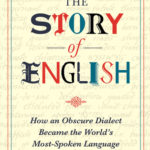I was amused by the beginning of the script. Having read, studied and performed A K Ramunajan’s A Story and A Song as a storyteller, I was delighted to see such an adaptation of the beautiful story as the prologue of a play. His other story ‘The Serpent Lover’ provides the main storyline. This is not the first time that I have come across Vijaydhan Dedha’s stories in performing arts. Duvidha, Paheli are both movies based on the same story and with similar theme as Nagamandala.
The beginning is beautiful with gossiping flames (I’ve loved that story) in a temple. Add to that a dejected playwright with a curse of death he can only dodge by staying awake one whole night. He has been cursed for his plays that have put many to sleep during performance.
‘I swear by this absent God, if I survive this night I shall have nothing more to do with themes, plots or stories. I abjure all storytelling, all play-acting.’
So there is gossip, there is humor, there is a call for action, an immediacy and a time specific goal at the start. Add to that the beautiful visual of the flames at night. I was intrigued throughout my reading of the script as to how this may be performed live on stage. There are these flames, then there is a cobra from an anthill in the backyard that slithers into the house through the bathroom drain and transforms into a man and then back to the anthill. There are also dog and mongoose who fight the snake and are dead in the fight. The scene of ‘the snake ritual’ is another scene that may make a great movie visual but how does one show it live on stage. Showing mere humans representing the animals won’t do. I read somewhere about using puppets but seem to have lost it. A definitely challenging script to direct visually. Which also means it calls for disruptive thinking and present something out of the ordinary, spectacular.
The script itself, like the stories, is gripping and raises multiple questions – entertaining and stimulating at the same time.
I felt sorry for Naga in the end, but the playwright’s changing the end of ‘Story’ brought a little smile. A great play in play, story in story format and a delightful example of adapting a wonderful story into a befitting script. Now only if I can get an opportunity to watch a good performance of it on stage.
Written in 1988
References – A K Ramanujan’s 2 stories and Jean Anouilh for Naga’s long speech (The passage recalls the myth of union of Heaven and Earth and of the first male and female – a lovely piece of literature on love, romance, desire and ‘nature’ of union of male and female).
Blurb
In Naga Mandala, Karnad turns to oral tales, usually narrated by women while feeding children in the kitchen. Two such tales are fused here. The first comments on the paradoxical nature of oral tales in general : they have no existence of their own, independent of the teller and yet live only when they are passed on from one to another. (A K Ramanujan’s A Story and A Song’)
Ensconced within this is the story of a girl who makes up tales in order to come to grips with her life.
In performance
Massive Production In Malayalam
By Abanti Chakraborti in Bengali
Award winning 1997 Kannada Movie
Academic Papers
A feminist reading – a good elaborate analysis, comparative accounts.


